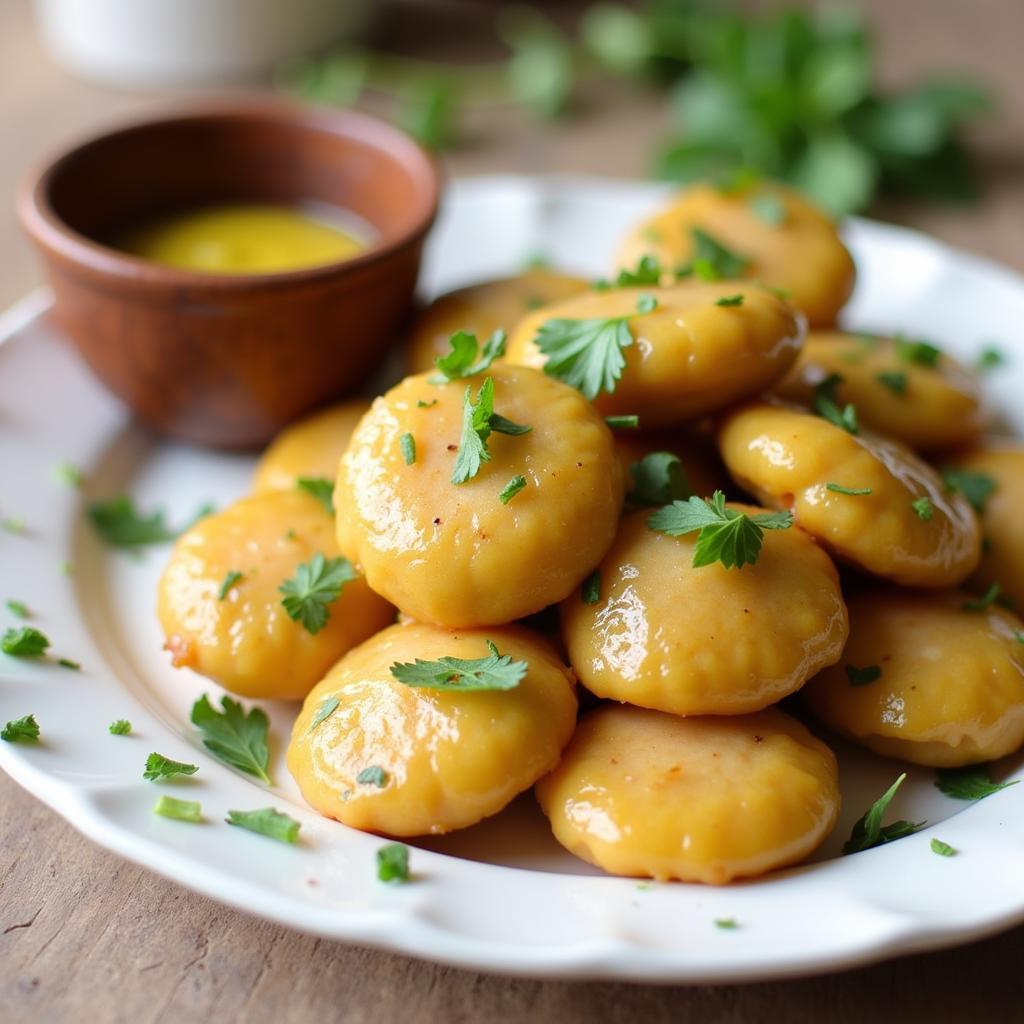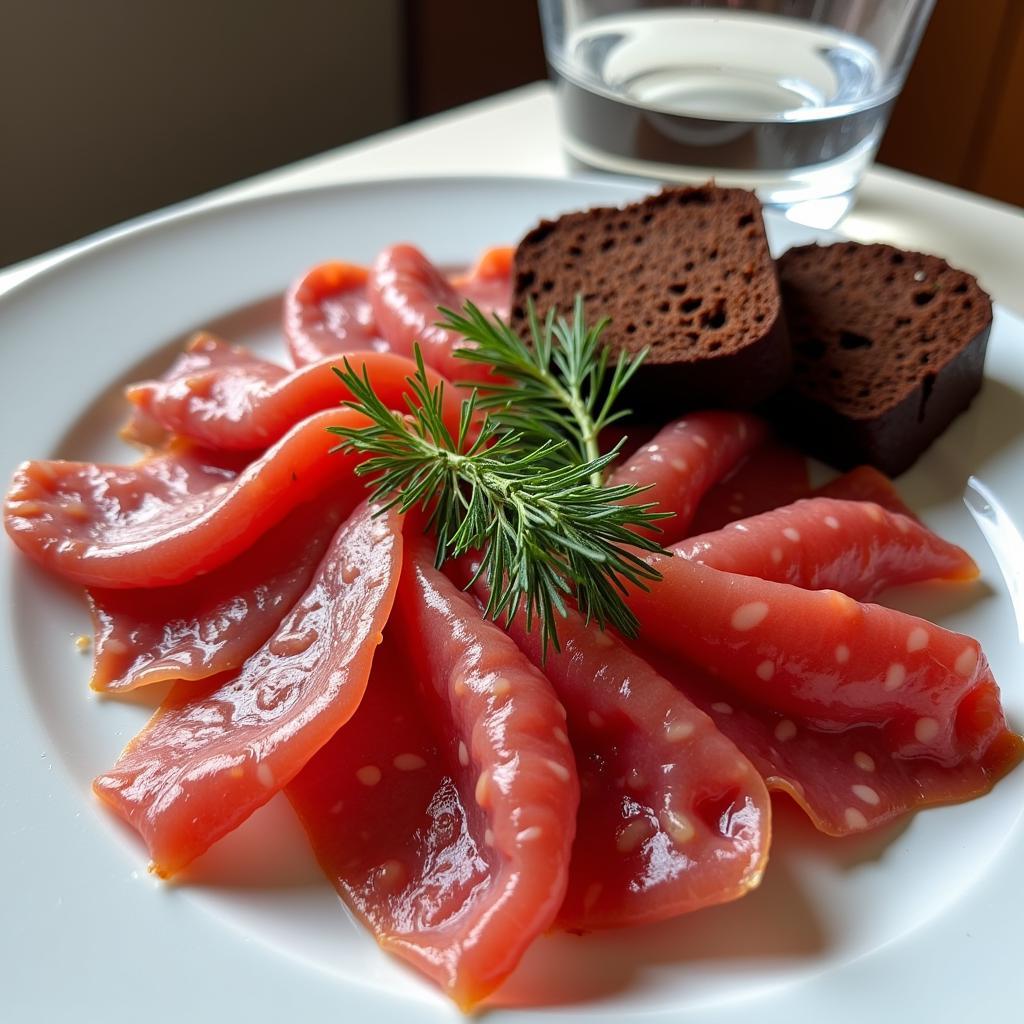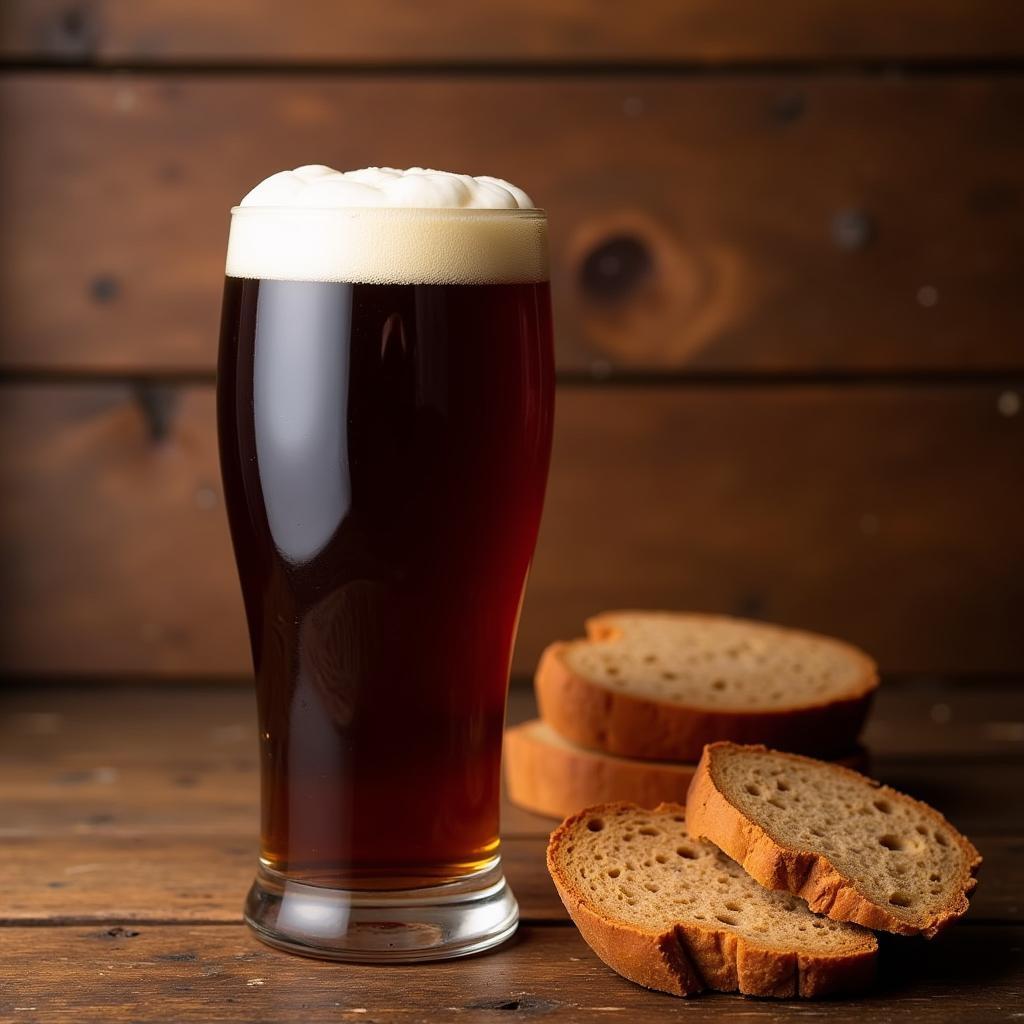Strange Russian Food? It might sound like an oxymoron to some, but beyond the familiar borscht and blini lies a world of culinary curiosities waiting to be explored. From savory jellied meats to fermented drinks, Russian cuisine offers a unique blend of flavors and traditions that often surprise and intrigue the adventurous palate. Prepare to embark on a gastronomic journey that will challenge your preconceptions and introduce you to the truly “strange” side of Russian food.
Delving into the Delicacies: Kholodets, Salo, and More
What constitutes “strange” is subjective, of course, but some Russian dishes definitely raise eyebrows for those unfamiliar with the cuisine. Take kholodets, for example, a jellied meat dish often made with pork or beef. It’s served cold, often with horseradish or mustard, and its jiggly texture can be a bit unsettling for the uninitiated. Then there’s salo, cured slabs of fatback, often flavored with garlic or spices. While it might sound unappetizing to some, it’s a beloved snack and appetizer in Russia, often enjoyed with rye bread and vodka.
Another peculiar dish is kvas, a fermented beverage made from rye bread. It has a slightly sour, yeasty flavor that can be an acquired taste. While some compare it to root beer, it’s a distinctly Russian drink with a long history and cultural significance. These are just a few examples of the “strange” foods that await those willing to venture beyond the typical tourist fare.
 Jellied Meat Kholodets in Russian Cuisine
Jellied Meat Kholodets in Russian Cuisine
Why So Strange? The History and Culture Behind Russian Cuisine
Many of the seemingly strange aspects of Russian cuisine can be traced back to the country’s history, climate, and cultural traditions. The harsh winters necessitate preserving food through methods like pickling, fermenting, and salting, which contribute to the unique flavors and textures of many dishes. The abundance of root vegetables and grains also plays a significant role, shaping the staples of Russian cooking.
Historically, Russia was a vast empire with diverse culinary influences. From Eastern European traditions to Asian flavors, these influences have mingled and evolved over centuries, resulting in the complex and often surprising cuisine we know today. Understanding the historical context can help appreciate the “strangeness” and discover the hidden depths of flavor and tradition behind each dish.
Is Russian Food Really That Strange? A Matter of Perspective
What one culture considers strange, another might consider commonplace. While kholodets or salo might seem unusual to some, they are deeply rooted in Russian culture and hold a special place in the hearts (and stomachs) of many. It’s all a matter of perspective.
 Salo: Cured Fatback, a Popular Russian Appetizer
Salo: Cured Fatback, a Popular Russian Appetizer
Perhaps the key to appreciating “strange” Russian food is to approach it with an open mind and a willingness to try new things. By stepping outside of our culinary comfort zones, we can discover new flavors, expand our palates, and gain a deeper understanding of different cultures.
Embracing the Unexpected: A Culinary Adventure Awaits
So, the next time you’re looking for a culinary adventure, consider exploring the “strange” side of Russian food. You might just discover your new favorite dish. From the intriguing textures of kholodets to the surprisingly satisfying bite of salo, there’s a whole world of flavors waiting to be uncovered.
 Kvas: A Refreshing Fermented Rye Bread Drink
Kvas: A Refreshing Fermented Rye Bread Drink
Conclusion: Strange, Yet Delicious
Strange Russian food may be an initial reaction, but with an open mind, you’ll discover a world of unique flavors and culinary traditions. Embrace the unexpected and embark on a delicious journey through Russian cuisine!
FAQ
- What is kholodets? Kholodets is a jellied meat dish, often made with pork or beef, and served cold.
- What is salo? Salo is cured fatback, often flavored with garlic or spices.
- What is kvas? Kvas is a fermented beverage made from rye bread.
- Why is some Russian food considered strange? Preservation techniques and cultural influences contribute to the unique characteristics of some Russian dishes.
- Where can I try these dishes? Authentic Russian restaurants or home-cooked meals are the best ways to experience these flavors.
- Are there vegetarian options in Russian cuisine? Yes, there are many vegetarian dishes based on vegetables, grains, and mushrooms.
- What are some other “strange” Russian foods to try? Consider trying pickled herring, blood sausage, or Olivier salad.
Other questions you might have:
- What are some traditional Russian desserts?
- What are the regional variations in Russian cuisine?
- How can I make kholodets at home?
You can find more information on our website about these topics and more. Explore our blog for more in-depth articles about Russian food and culture!
Need help?
Contact us! Phone: 02437655121, Email: minacones@gmail.com Or visit us at: 3PGH+8R9, ĐT70A, thôn Trung, Bắc Từ Liêm, Hà Nội, Việt Nam. We have a 24/7 customer service team.